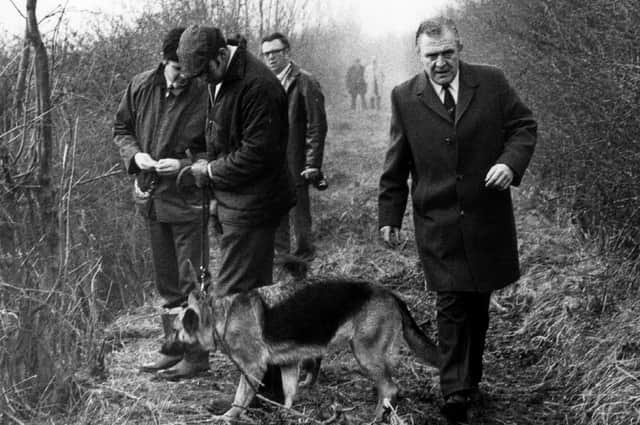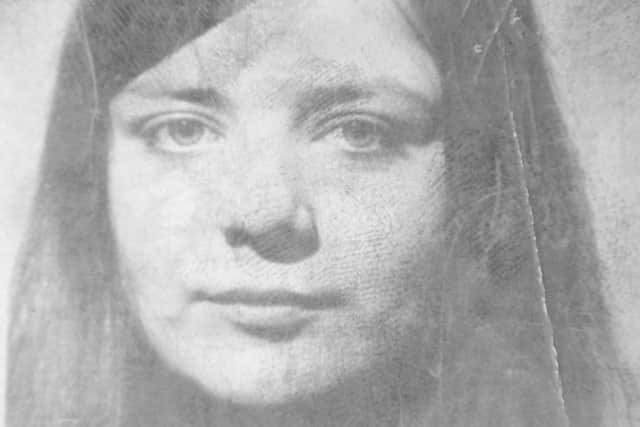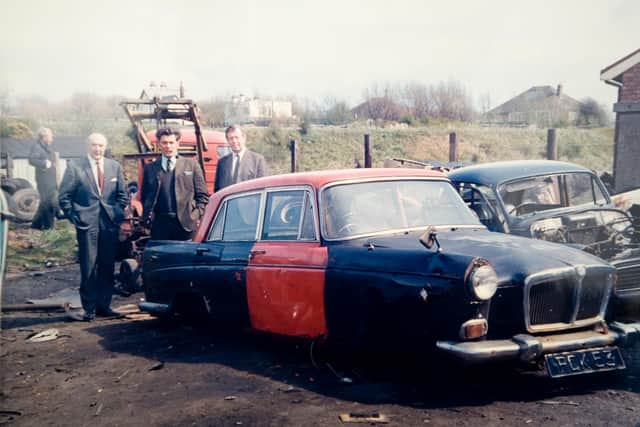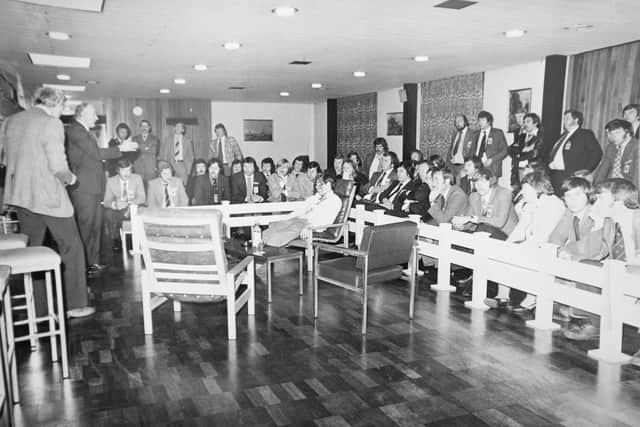Strangled and dumped in a Lancashire lover's lane


On a quiet dirt track off Bryning Avenue in Wrea Green, Det Chief Insp Ian Hunter stood and watched.
The winter frost was on its way out by now, ready to give way to a pleasant spring. The track was a well-known, isolated and usually popular hang-out for courting couples.
Advertisement
Hide AdAdvertisement
Hide AdBut there was little noise, few cars, no people. The scene in front of the seasoned detective was eerie.


In front of him, just off the track, lay miles of green lush, unspoiled fields. You could hear a pin drop.
It was a popular spot with dog walkers too, and most of them would have been none the wiser about what had happened there.
But Ian Hunter did know. He was yards from where the body of a teenage girl was discovered.
Advertisement
Hide AdAdvertisement
Hide AdEleven weeks earlier, 17-year-old Elisabeth Foster left her family home in Bleasdale Avenue, Kirkham, as usual. It was a Sunday, when she would make the normal journey from her home to the Pentecostal Church in North Road, Preston.


The bus stop for Preston was just yards away. She would catch it at just after 5.30pm. She would be in Preston for 6.30pm.
Quiet, pleasant, deeply religious and wary of strangers, she stuck to her routine and would only ever take a lift from someone she knew well. That Sunday, January 2, 1972, she never got on the bus.
“I went to the scene to get a feel for the inquiry, ” explains Mr Hunter. “It was back to normal. It was long after the event when I went there. I still wanted to go and have a look at it. I was so long in the tooth by then, to me it was just a murder scene.”
Advertisement
Hide AdAdvertisement
Hide AdWhat he did know by then was Elisabeth had walked at least part of the way to the bus stop with a friend, but they didn’t walk all the way together. Another man who knew her slightly said he had seen her walking along the road.


Three people who got the same bus knew Elisabeth. One got on at Blackpool, two more were waiting at Millbanke bus stop where usually got on. All said she wasn’t on board. Strangely, that night, the bus had been around 10 minutes late and didn’t arrive in Kirkham until 5.50pm.
At first, her family weren’t too worried. This was well before the days of mobile phones and they knew she sometimes stayed with relatives in Preston after visiting the church. But the next day she still hadn’t arrived. Police launched a missing from home inquiry, initially thinking she had run away from home.
But then, two dog walkers exercising their pet off Bryning Lane made the horrific discovery. It was 11 weeks after that when Det Chief Insp Hunter got involved. In the aftermath of the grim discovery of Elisabeth’s body, a murder control centre was set up at Kirkham, with 70 detectives working on the case.
Advertisement
Hide AdAdvertisement
Hide AdBut they had hit a brick wall, and Hunter was the man to try to break it down. The post mortem examination revealed Elisabeth had been strangled and sexually assaulted. When her body was found her underwear was missing, along with a shoe and her purse.
They were later recovered some distance away. Significantly, samples removed from her body confirmed her attacker was of the B blood group. “In those days, we relied on blood groups as we did not have the developed benefit of DNA,” Mr Hunter adds.
It was an important discovery – B is a fairly uncommon blood group and only a minority of the population have it. The forensic scientists went further. Tiny flecks of pillar box paint were found on Elisabeth’s clothing. Red car carpet samples and minute vehicle upholstery fibres were also discovered.
The intricate findings kicked off a huge forensic examination, with every man in Kirkham asked to give samples of saliva. More than 10,000 were collected. In addition, more than 35,000 people had been seen by officers, more than 5,000 statements were taken.
Advertisement
Hide AdAdvertisement
Hide Ad“It was a massive task. The only similar task undertaken was during the 1950s when a murder was committed in Blackburn and every male in the town was fingerprinted, ” says Mr Hunter.
Detectives started to realise that she must have been picked up before she got to the bus stop, and countless interviews with locals, dog walkers and potential witnesses started to build a picture of the car she may have got into. Mr Hunter also realised quickly detectives had been barking up the wrong tree.
He says: “It was only when I came in to review the job and re-read the whole job that the main vehicle they were concentrating on had already been traced and the occupiers eliminated.
“The forensic scientists had done a very thorough examination of the scene to an extent that plaster casts had been made of the tyre impressions.”
Advertisement
Hide AdAdvertisement
Hide AdThey were Fisk make tyres, and the unusual dimensions of the car indicated it was a Morris Oxford, a red one based on the flecks of paint found on Elisabeth’s body. It was a huge breakthrough.
“I briefed the teams in Kirkham and provided them with the crucial information about the vehicle, ” says Mr Hunter. “I knew there was a possibility it had been scrapped, so I told them to go to every scrapyard in the Fylde.”
It didn’t take long to make the crucial discovery. Just two days later, he got a call from some officers saying a suspicious car had been found at a scrapyard near Kirkham. It was a typical scrap business.
A chaotic mass of cars: Morris Oxfords piled on top of one another. But one stood out. Pillar box red, with a crude, failed attempt to splash black paint over it. One thing was missing – the tyres, which had been removed and sold.
Advertisement
Hide AdAdvertisement
Hide AdLuckily, the owner of the scrapyard kept good records and the tyres were recovered. They were Fisk. Even more damning, one had a rubber plug in it. So did the cast taken by forensic officers.
“It was absolute concrete proof, ” says Mr Hunter. “That vehicle had been used to dump Elisabeth Foster’s body. It was a tremendous achievement. The crucial aspect of the inquiry had been solved.”
The owner was found through the DVLC in Swansea. He was tested and had ‘B’ blood. Brian Herbert Ball was a bus driver, employed by a Blackpool bus company which regularly took Elisabeth Foster from Kirkham to Blackpool.
Elisabeth would only accept a lift from someone she knew. Ball had been working the night she disappeared, but he made a last-minute request for a four-hour break.
Advertisement
Hide AdAdvertisement
Hide AdThe struggle to find a replacement driver caused the bus to be 10 minutes late. While Elisabeth was waiting for it, Ball arrived in his car.
“He was just an ordinary Blackpool fella,” said Mr Hunter. “We had no knowledge of his background. But he was also a predator.”
It was one of Lancashire’s classic forensic successes. But it didn’t end how police wanted it to. Like so many cases even today, the hard police work wasn’t rewarded in court. Ball was charged with murder, but convicted of manslaughter. “I would love to know what happened there – that he only got convicted of manslaughter,” says Mr Hunter, ruefully.